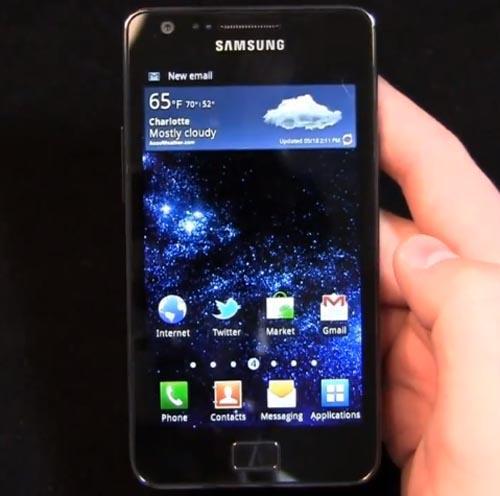
Now that Ice Cream Sandwich is right around the corner, we’ve got people talking about which devices will be getting the large update. The upgrade from Android 2.3 to Android 4.0 is decidedly big, with Google revealing the search giant’s biggest overhaul to the smartphone’s mobile OS since its release. Because of that alone, it would be hard to believe that every phone out there would get the upgrade. Samsung has plenty of Android-powered phones out there, many of which have “good enough” specifications, but that aren’t powerful enough to get the Android 4.0 upgrade – even if that’s not exactly what owners want to hear.
Yesterday, news broke that Samsung Italy had come forward and discussed Samsung’s position on Ice Cream Sandwich. More to the point, they pointed out specific devices that would be receiving the major OS overhaul. Now, if you look at the comments on some of those stories around the ‘net, you’ll notice that people are pointing out that Samsung Italy didn’t mention the Galaxy S. At least not in the articles, anyway. I’m not sure why that would be worth pointing out, considering the Galaxy S’s upgrade to Ice Cream Sandwich is a guarantee. So that aside let’s talk about the list itself, shall we?
Like I said before, Samsung has a lot of phones out there. Now, when the manufacturer launched the Samsung Galaxy S, the company did their best to market it as the most powerful out there at the time. That’s obviously not the case anymore, and despite the fact that back then the Galaxy S devices were impressive in their own right, they aren’t the cream of the crop anymore. And, like other companies, Google doesn’t want to provide a half-filled update. They want phones to be able to run Ice Cream Sandwich the way they intended it to be run, and if a phone will suffer performance wise due to the update, Google (and the manufacturers of specific devices) aren’t going to push the update.
Okay, that aside, we’ve got the list. Right at the top there’s the Samsung Galaxy SII, which shouldn’t be a surprise to anyone. Honestly, I think Samsung handled the release of the Galaxy SII a lot better this time around, keeping all of the models the same (pretty much) across the globe. So when the Ice Cream Sandwich update finally does start to roll out, only carrier testing should get in the way. Maybe that’s in a perfect world and I’m just dreaming, but at least the way Samsung has laid it out makes that perfectly possible.
And then we’ve got the new tablets that have released, or will be released here shortly. The Galaxy Tab 7.0 Plus, the Galaxy Tab 7.7, and the Galaxy Tab 8.9. Truth be told, these should have not been a surprise to anyone, either. Considering their brand new status on the market, the amount of hot water that Samsung would have been in had they not updated these devices would have been epic. So it’s good that they already plan on upgrading right out of the gate, even if it won’t happen out of the box. But, what about the big brother to the whole lot, the Galaxy Tab 10.1? Thankfully it managed to make the list, too.
And then the last device on the list is the Galaxy Note. It isn’t a phone, and it isn’t a tablet, but something right there in the middle with its huge 5-inch display. But, it’s a new device, too, so the fact that it will get upgraded to Android 4.0 isn’t a shock. Again, Samsung is playing it closet to the chest with this update strategy, clearly pointing out that new devices will get updated without question, while at the same time leaving off older devices in hopes of getting the point across. But, that’s where the problem would lie, I guess.
Devices like the Samsung DROID Charge, for example. Or the Samsung Infuse 4G. These are capable devices in their own right, even if they aren’t touting dual-core processors or 1GB of RAM. And people bought these handsets thinking that upgrades would be possible. Of course, the fact that Android 2.3 seems to be a hard upgrade in its own right, expecting Android 4.0 is probably a mistake from the get-go.
Unfortunately, while we’re in the hardware race now, the fact that software is still advancing by leaps and bounds can’t be ignored. What was a great piece of hardware months ago just isn’t anymore, and the software is going to keep outpacing it, making sure that those old handsets simply can’t run it. As consumers, we have to remember that we’re living in a market that will never stop advancing, and part of that advancement is the rejection of old technology. So no, we shouldn’t be surprised by Samsung’s list at all – we should be more surprised if Samsung decides to change their mind and add new (old?) handsets to the list, which would be a shock to everybody.
So with the list published, are you thinking about getting the Galaxy Nexus? Or does this list make you want to skip Samsung altogether? Let me know in the comments below.